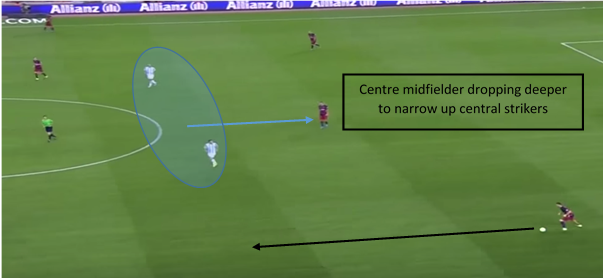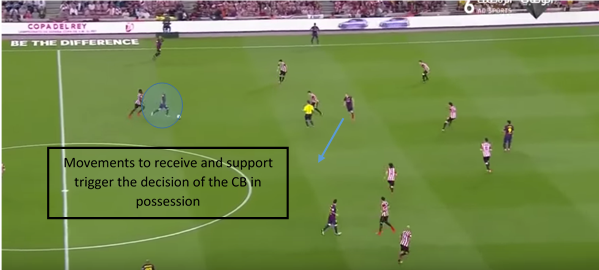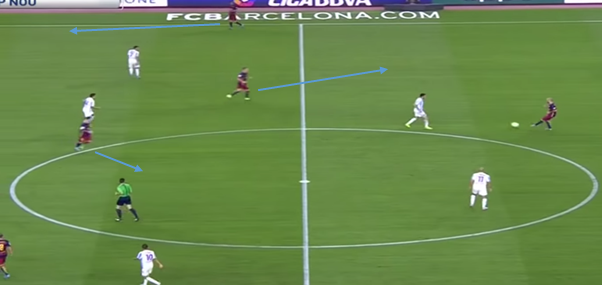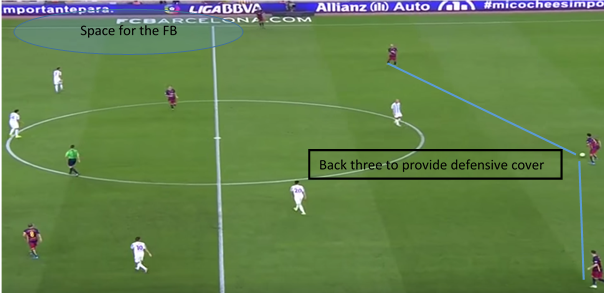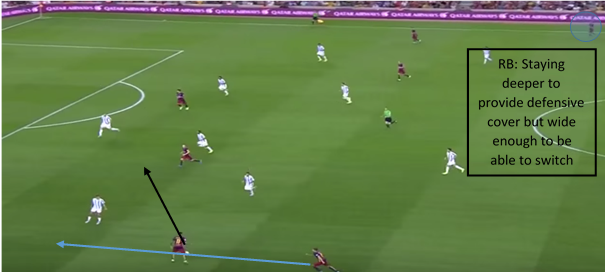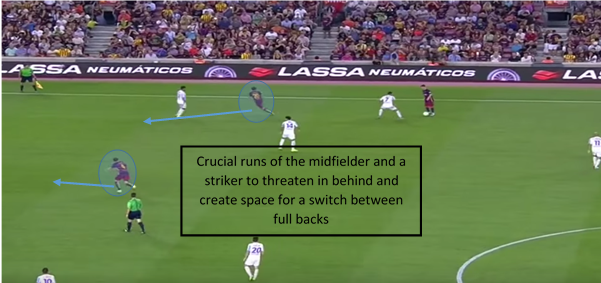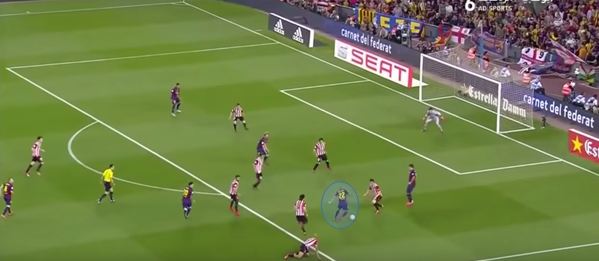By Alex Trukan
Defenders have been valued not only in defence but also in attack for the last couple of years. Full backs were a major revelation at the World Cup in 2002 and since it became common and obvious when a full backs is utilised on the opposition half. Centre backs’ role in attack is only starting to be appreciated and used as those players become assets that can create difference and unbalance opposition defence. Involvement of defenders in attack, in order to minimise dangers involved and make it work, requires appropriate support and adjustments from midfielders, strikers and a team as a whole.
Centre backs
When the ball is being played out from the back, and a team has an aim to create overload by central defender going forwards, the role of the defensive midfielder is to drop between/next to centre backs and be able to receive but at the same time be able to drop back if one of the centre backs make a forward run. His primary role is therefore to drag opposition striker’s away from the ball and secondary to be able to provide defensive cover in case centre back goes forward.
The other one/two midfielders as well as a striker have to push up and play higher on the opposition half to take midfielders of the other team with them and create room for centre backs to play out. As we can see below that stretches the opposition midfield and strikers units apart.
Once the centre back is on the attacking half, the timing of the pass is crucial as the longer he carries the ball, the more danger is created in case of losing it. Therefore, support as well as forward runs of midfielders/strikers are essential to release the ball and play forwards. From the technical point of view, centre backs are often converted from a midfielders (ex. Mascherano) in order to ensure they’re able to play out with a technical excellence.
Full backs
Obviously starting positions of full backs will be higher up the pitch than centre backs, but similarly, the trigger for their attacking involvement is the movement of the midfielder to support from behind and provide defensive cover.
The midfielder usually drops between centre backs and a full back. However, it doesn’t necessarily mean the full back on the ball side might go forwards. Forward run of the opposite side full back is also possible but then the back three (with a dropping midfielder) should slide across to provide balance.
If the full back that joins the attack is on the ball side, one of the options is to make an overlap and receive the ball from wide midfielder higher up the pitch. As we can see below, the opposite side full back as well as centre backs stay deeper.
If the winger stay wider, the full back might drive inside and make an underlap. What becomes more and more popular is a full back driving inside to play a direct pass to the opposite winger or full back. In this case full back becomes responsible for shaping the direction of attack and playmaking.
[wpsharely id="2988"][/wpsharely]Ultra-offensive defenders might not only be used during the build-up play and to create chances but also in the final third when finishing the attack. That became quite obvious for the full backs, but only starts to be utilised for the centre backs who used to go into the final third only in set-pieces.
It now becomes obvious that defenders should possess similar technical qualities as midfielders or strikers to be able to play out from the back effectively as well as get involved in the opposition half.
By Alex Trukan, Development Coach, Nottingham Forest
@AlexTrukan

